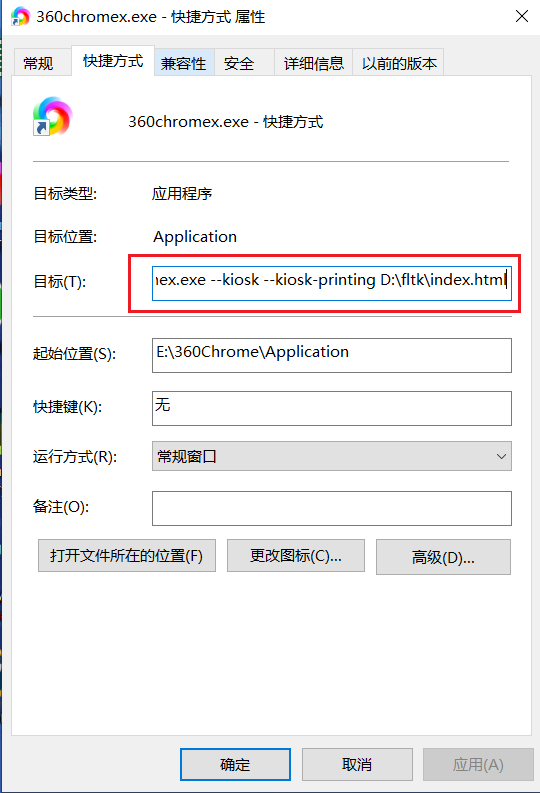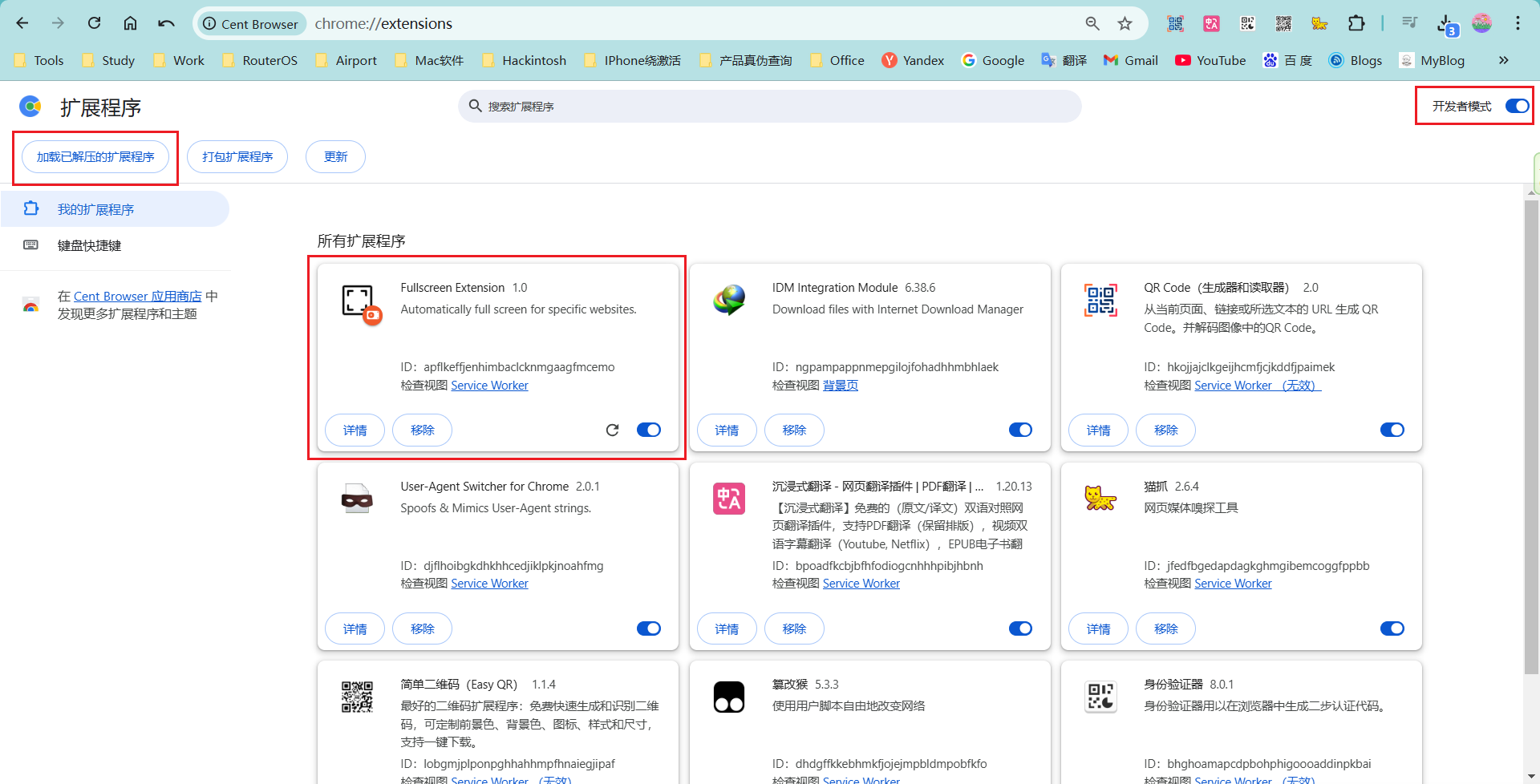浏览器自动全屏运行指定网址
Windows开机启动项文件夹(命令行输入以下指令)
explorer shell:startup #当前登录账户启动项
explorer shell:common startup #所有用户启动项
文件夹路径(admin换成自己的账户)
C:\Users\admin\AppData\Roaming\Microsoft\Windows\Start Menu\Programs\Startup #admin换成自己账户名称,这里是登录账户启动项
C:\ProgramData\Microsoft\Windows\Start Menu\Programs\StartUp #所有用户启动项
方法一:浏览器属性添加 --kiosk --kiosk-printing D:\fltk\index.html参数
- 一定要把这个浏览器所有的进程kill掉
- 双击打开这个修改的浏览器快捷方式
- 浏览器中按F11和ESC键也无法退出全屏,只能通过任务管理器结束浏览器进程

方法二:HTML+js代码,需要手动点击触发事件
<!DOCTYPE html>
<html>
<head>
<meta charset="utf-8">
<title></title>
</head>
<body>
<input id="Button1" type="button" value="开始全屏" onclick="kaishi()" />
<input id="Button2" type="button" value="关闭全屏" onclick="guanbi()" />
<script>
function kaishi() {
var docElm = document.documentElement;
//W3C
if (docElm.requestFullscreen) {
docElm.requestFullscreen();
}
//FireFox
else if (docElm.mozRequestFullScreen) {
docElm.mozRequestFullScreen();
}
//Chrome等
else if (docElm.webkitRequestFullScreen) {
docElm.webkitRequestFullScreen();
}
//IE11
else if (elem.msRequestFullscreen) {
elem.msRequestFullscreen();
}
}
function guanbi() {
if (document.exitFullscreen) {
document.exitFullscreen();
} else if (document.mozCancelFullScreen) {
document.mozCancelFullScreen();
} else if (document.webkitCancelFullScreen) {
document.webkitCancelFullScreen();
} else if (document.msExitFullscreen) {
document.msExitFullscreen();
}
}
document.addEventListener("fullscreenchange", function() {
fullscreenState.innerHTML = (document.fullscreen) ? "" : "not ";
}, false);
document.addEventListener("mozfullscreenchange", function() {
fullscreenState.innerHTML = (document.mozFullScreen) ? "" : "not ";
}, false);
document.addEventListener("webkitfullscreenchange", function() {
fullscreenState.innerHTML = (document.webkitIsFullScreen) ? "" : "not ";
}, false);
document.addEventListener("msfullscreenchange", function() {
fullscreenState.innerHTML = (document.msFullscreenElement) ? "" : "not ";
}, false);
</script>
</body>
</html>
方法三:使用浏览器插件实现
1、新建一个名为 fullscreen-extension 的文件夹,在该目录中创建 manifest.json 和 background.js 两个文件
manifest.json 文件内容
{ "name": "Fullscreen Extension", "version": "1.0", "manifest_version": 3, "description": "Automatically full screen for specific websites.", "icons": { "16": "icon16.png", "48": "icon48.png", "128": "icon128.png" }, "background": { "service_worker": "background.js" }, "permissions": [ "tabs" ], "host_permissions": [ "https://xiykj.github.io/*" ] }
background.js 文件内容,如果想要打开某个网址自动全屏,直接在这里添加地址
chrome.tabs.onUpdated.addListener((tabId, changeInfo, tab) => { if (changeInfo.status === "complete" && tab.url.includes("file:///D:/fltk/index.html")) { chrome.windows.update(tab.windowId, {state: "fullscreen"}); } if (changeInfo.status === "complete" && tab.url.includes("https://www.cnblogs.com")) { chrome.windows.update(tab.windowId, {state: "fullscreen"}); } if (changeInfo.status === "complete" && tab.url.includes("https://www.js-xiaonuo.com:666")) { chrome.windows.update(tab.windowId, {state: "fullscreen"}); } if (changeInfo.status === "complete" && tab.url.includes("http://192.168.1.1")) { chrome.windows.update(tab.windowId, {state: "fullscreen"}); } if (changeInfo.status === "complete" && tab.url.includes("https://www.qq.com")) { chrome.windows.update(tab.windowId, {state: "fullscreen"}); } });
2、在fullscreen-extension文件夹中添加三个图标文件,icon16.png、icon48.png和icon128.png

3、浏览器进入扩展程序页面,点击加载已解压的扩展程序按钮,选择 fullscreen-extension 文件夹,加载扩展程序

4、如果需要修改全屏显示的网址,需要在 background.js 文件中添加后,浏览器再执行卸载重新安装插件
以上文章参考:https://blog.csdn.net/qq_48759409/article/details/130087096


 浙公网安备 33010602011771号
浙公网安备 33010602011771号